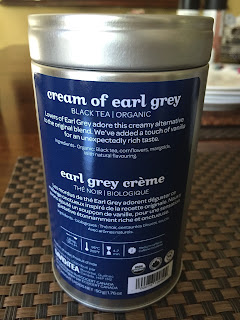Before discussing how bone china is produced, it's important to distinguish between fine bone china and fine china. WARNING: Vegans may find this information disheartening. No kidding.
Bone China has bone ash in it, usually cow. It is also mixed with feldspar, ball clay, quartz and kaolin clay.
Fine China and Porcelain were being made as early as AD 620 in China. They are made of kaolin clay, feldspar and silica. There's a difference here between fine china and porcelain, although most people use the terms interchangeably. Fine china is softer and more malleable, fired at a temperature of 1200 degrees Celsius. Porcelain is used for industrial purposes and is fired at 1455 degrees Celsius.
Bone China has a warmer colour and is more translucent than fine china. A discerning eye can see the difference. Often bone china is thinner.
There are four main steps to making bone china.
Step One: Clay Making
- Bone Ash
- China Clay
- Ball Clay
- Flint
- Feldspar
All of the above are mixed together with water to form a slurry.
The water is eventually filtered and pressed out. Air is pressed out in this step, too, by default. The remaining flattened sheets of clay, if being made into plates, are rolled into big tubes called pugs. They retain about 20 % humidity for malleability. How fun is that word? Pugs. Who knew that pugs turn into fine china.

Step Two: Mold Making
Plaster molds are made from metal masters. The metal masters aren't used themselves with the clay because they don't draw the remaining moisture out, whereas the plaster molds do.
Pugs are sliced for plates. Cups and finer shapes are poured into molds. Handles and fine objects are affixed by hand! Moisture decreases to a low 0.5% as the plaster absorbs the excess water.
The china is now ready to be sent to the kiln and is fired at 1200 degrees Celsius for several hours. It shrinks by about a fifth its size at this point.
After it is fired, it is polished with water and stones to get rough edges off, to prepare it for the next phase.
Step Three: Glazing
This phase is pretty self-explanatory. The beautiful china is sprayed and set with a special glaze to give it a lovely sheen. It is set in a Gloss Kiln. After it is glazed it is ready for decals and decoration.
Step Four: Decorating
The pieces are now ready to have one or more steps completed: decals added, precious metals painted on, and/or enamel painted.
Decals may be added by hand or machine. They are added with moisture and sealed in a kiln at the low temperature of 871 degrees Celsius.
Gilding is the process of painting a precious metal on, usually gold or platinum. For more complex pieces like teacups and creamers, this is usually done by hand. For more symmetrical pieces like plates, this can be done by machine. When completed it is sealed on at 760 degrees Celsius.
Enamel is often painted on to add a pleasing 3-D effect. This can be done by hand or machine. It also needs to be sealed at 760 degrees Celsius.
The three photos above show workers painting on gilding. The photo below shows a delicate pink enamel added to a lovely white plate.
It's a wonder with all this heat and firing any china makes it through at all, and indeed, there is a LOT of breakage! The final step is inspection and packaging.
Some interesting facts:
Royal Albert, my favourite china company, has an FAQ section on their website. One of the questions asks where they get their bone ash from. They answer that their bone ash is 35% tricalcium orthophosphate. Ummmmmm, I'm a science geek and that doesn't answer the question, even for me! Although a 35% bone ash is a good percentage. But still. Very evasive.
Another interesting fact.
Charleskrafft.com might be an interesting website to visit if you want to turn a recently departed loved one into a piece of china...no kidding! This company uses human ash (or used to, anyway...not 100% sure if they still do) to make custom made fine bone china. Hmmmmm.
Below I photographed some of my personal china. The first is a sandwich platter from Royal Albert. The pattern is Devonshire Lace. You will notice how translucent it is, seeing the shadows of my fingers behind it. That is a quality of all fine bone china.
And just for fun, the matching teacup, saucer and salad plate!
I hope you enjoyed this post. I had fun researching it.
Happy Steeping!
Sources:
www.knowledgenuts.com "Difference Between Fine China, Bone China and Porcelain" by Debra Kelly
http://home.howstuffworks.com/lenox.htm
royalalbert.co.uk FAQ section
















































